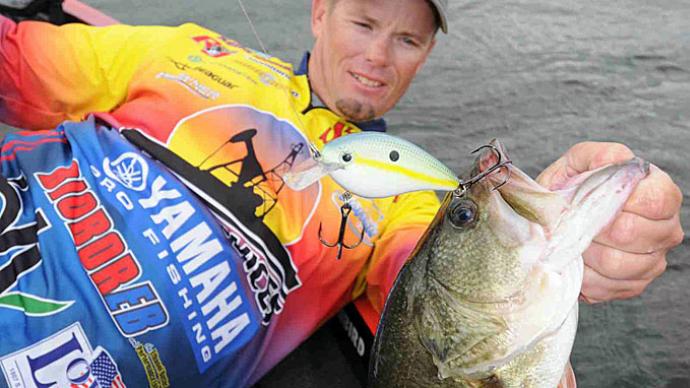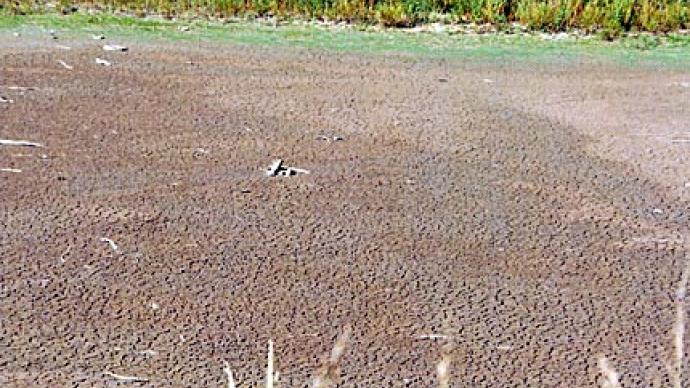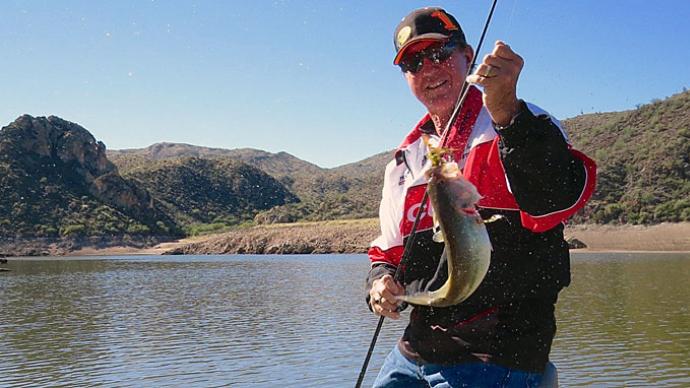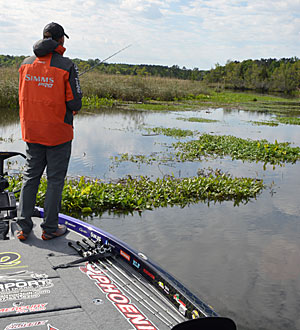
The reservoir’s water level appeared high. Trees and bushes were flooded, and the boat easily floated from its trailer. This day was pre-Internet when finding accurate water-level measurements involved more than tapping on a smartphone app. So knowing the water level — or where it would be in one week when I returned for a tournament — required an extra piece of equipment.
I ran toward the reservoir’s upper end, where steep riverine topography kept it from expanding as much as it would on the lower-end flat. Along the way, I slowed the boat and idled under a bridge. I steered the boat alongside an abutment; I reached into the glove box and pulled out a sizeable yellow tire crayon. I left a two-foot line on the concrete at the water’s surface. That would give me a reference point when I returned for the tournament. And knowing how the water level changed would dictate how I would fish.
Their environment directs bass. They either adapt to it or perish. That means following the most prevalent food source, such as deep-water schools of shad on Kentucky Lake throughout the summer, or using the most prevalent cover, such as the expansive beds of aquatic grass that fill Cayuga Lake in Upstate New York. The current and color of water play roles, too, but even more critical is the water level.
Water level dictates where bass live. They have room to roam when it’s high and face confinement when it’s low. Each level calls for different techniques and tactics, and knowing which ones to use can be the difference between an empty and full livewell. Here are four commonly encountered situations that affect water level and how to fish them.
Tides
When the 2016 Bassmaster Elite Series rolled into Georgetown, S.C., in April, there were many unknowns about the fishery. Few competitors had explored this part of the Palmetto State, where several rivers form swamps and backwaters before dumping into the Atlantic Ocean. But there was one piece of common knowledge: It is tidal water.
Most freshwater rivers connected to the ocean, at least to the first obstruction, such as a dam, have two high tides and two low tides each day. They are caused by the moon’s gravitational force pulling on the oceans. The water-level difference between high and low tide can range from inches to feet. High and low tides happen at different times each day. Knowing this information can be used to your advantage. Bassmaster Elite Series angler Aaron Martens paid attention to the tides at this tournament.
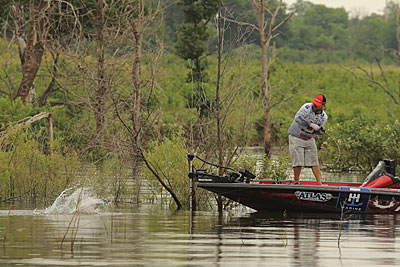
It’s about a 2-hour run from where the Elite anglers launched to the Cooper River, where Martens chose to chase bass in channels around abandoned rice fields. You must navigate the Intracoastal Waterway, several no-wake zones, and Charleston Harbor, where Civil War-era Fort Sumter still stands, and ocean-going ships line wharfs. His boat would need fuel for the return trip, so he chose to pump it before fishing on the second day. He knew the low tide was best for catching bass, and it wouldn’t happen until late in the day. So he stopped while the water was high and fishing was tough.
Outgoing and low tides are best for bass fishing because they reduce the water level and concentrate bass. They are forced to retreat to defined channels and points and wait until the tide rises. Draining water also creates a current, which washes food past certain spots. Bass are conditioned to school on these spots when the tide falls to a certain height. That’s why you can fish for hours on a tidal river without a bite and then fill your limit in five casts from one rock or laydown on a point.
So why are incoming and high tides more challenging to fish? They bring more water, which creates more bass-holding cover. Aquatic grass beds are inaccessible during low tide, for example, have enough water for bass and boats on high tide. And with that many places for bass to swim, they disperse and become more challenging to locate.
The incoming tide is good fishing when it starts but becomes tougher as it continues. But that doesn’t mean you should give up until it switches. Fire up your outboard and chase the incoming and low tides. They occur later the farther you move upstream. If you are catching on the last hour of an outgoing tide, for example, use a tide chart available on most fishing electronics to find out when that is occurring at each spot on the river. Then you can schedule a milk run that puts you at each spot at the perfect time. But when that one-hour window closes at a specific spot, you’ll need to move on, even if you just caught a bass. Water level puts them on that tight of a schedule.
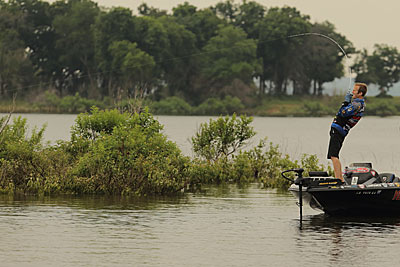
There is one more naturally occurring phenomenon that affects the water level. Seiches happen when several days of stiff wind from one direction pushes water into one end of a lake. They are more prevalent on large bodies of water, such as the Great Lakes. In 1844, a 22-foot seiche on eastern Lake Erie sent water over a seawall, killing 78 people, and created a large ice dam that stopped Niagara Falls. While large seiches are rare, smaller ones are common enough to affect the bass location, whether flooding new cover downwind or emptying shallow spots upwind.
High water
Bass are curious creatures. That’s a big reason why newly developed lures work so well. They are curious about cover, too. High water, which occurs after heavy rains or flooding, gives bass more space and cover. And like high tide, it makes fishing tough; and unfortunately, low tide isn’t a few hours away. The best remedy to this situation is to cover water.
With enough bites, you will see a pattern emerge. Bass may prefer green-leafed bushes, for example, over ones without leaves. Once you uncover a pattern, you can eliminate more water faster. That’s what Greg Hackney, the 2014 Bassmaster Angler of the Year, did at Lake Texoma in June 2016, when he won BASSFest with 20 bass that weighed 66 pounds and 2 ounces. He not only recognized that bass preferred green leafy bushes, but they wanted them close to a channel or the original shoreline, which formed a shallow ledge with a higher water level.
High water usually isn’t a time for finesse fishing. It’s about power fishing. Comb flooded areas quickly with topwaters, such as frogs and buzzbaits, spinnerbaits, or square-bill crankbaits. When you find the cover bass prefer, go after them as Hackney did. Pick up a flipping stick, fast-retrieve reel, and braided line, and tie on a jig or Texas-rigged soft plastic.
Low water
Drought conditions lower water levels gradually, but they still affect fishing. One tactic is searching for better water quality. With less water entering a system during a drought, water stagnates. Any incoming water can make a difference. If you are fishing a reservoir or river, check several creeks. Often certain ones, especially those fed by springs, still have flowing water, even when others have stopped.
You have to adjust where you fish. If you know the current lake level, calculate the difference from the level used to create your paper map. If the lake is 10 feet low, for example, the 10-foot contour line is the shoreline, the 20-foot contour is 10 feet, and so on. That will show you any structure that is now shallow enough to be productive.
Finding bass is easier with less water to work with, but it will be clearer, making them spooky. Use patience when approaching spots and make the most of low-light conditions such as overcast days, mornings, and evenings to hide your presence. Each spot will hold more bass, making it easier to slow down and finesse them out.
Don’t despair if your lake is under drought conditions. Vegetation will grow on those exposed shallows. And once the cycle returns to rainy, and it will, it will flood. The added shallow-water cover will improve spawns and support more bass, ensuring better fishing in the long run.
Drawdown
A week passed, and I returned to the reservoir for the tournament. As I idled under the bridge, I scanned the abutment for my yellow mark. My eyes started at the water’s surface and moved up before I finally saw it, nearly 2 feet above the water’s surface. A lot of water had left the reservoir, and so did a lot of places for bass to hide.
When managers prepare their reservoirs for winter rains or spring snowmelt, drawdowns usually happen in the fall. They also are common on the days after heavy spring or summer rains. The latter is what happened to this reservoir. Regardless of why they happen, drawdowns have a similar effect on bass.
Falling water repositions bass by the day, sometimes by the hour. Bass aren’t going toward the back of creeks or pockets. Instead, they follow structure, such as long points or creek channels leading to the reservoir’s central basin or river channel. It’s similar to rising water when bass will continually move to the latest flooded cover but in reverse.
One of the best places to fish during a drawdown is a steep bank. That’s where I found bass in this tournament. I quickly checked the flooded laydowns and trees, where I caught them in practice, but the falling water made those spots inaccessible. Across the river from where I was fishing was a 200-yard stretch of a steep bank. Going over it repeatedly, I put together a limit with the same lure — a Texas-rigged 6-inch lizard.
The water level is a variable that you need to monitor while fishing. You'll catch more bass by knowing the level and the trend that caused it.


